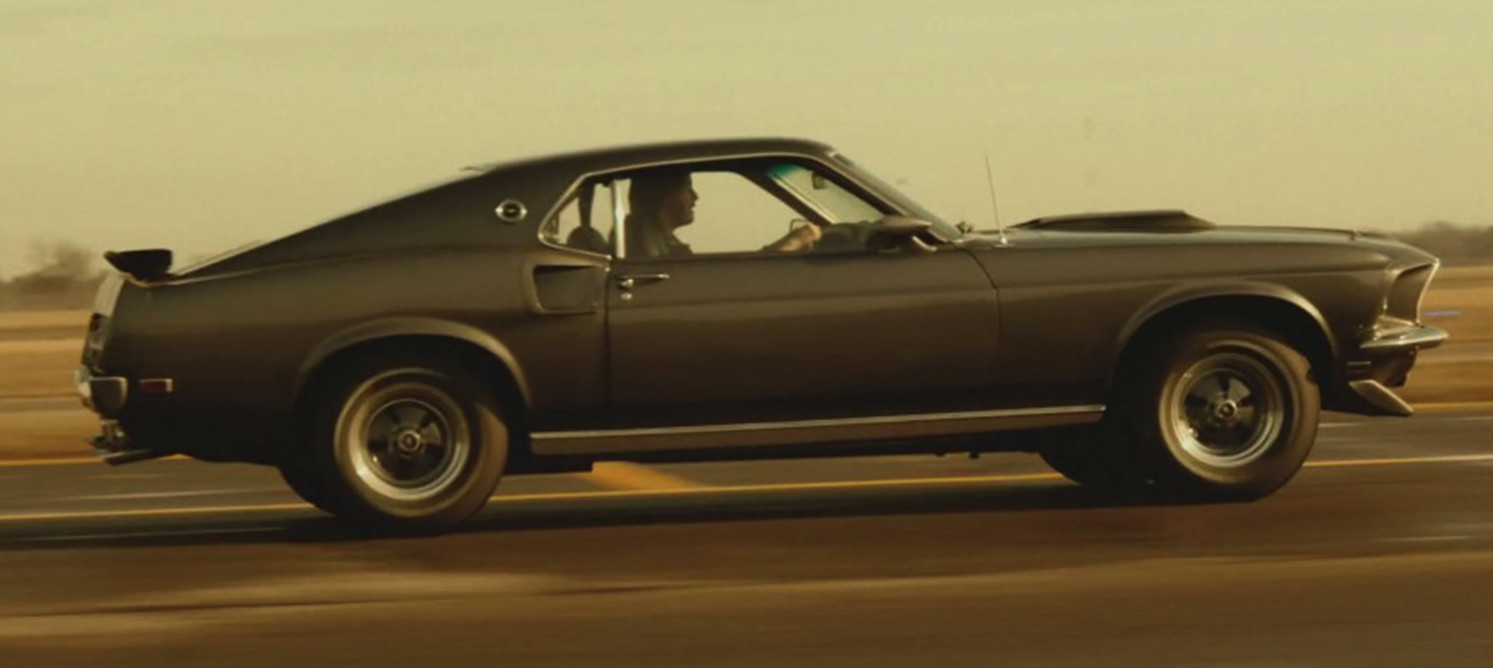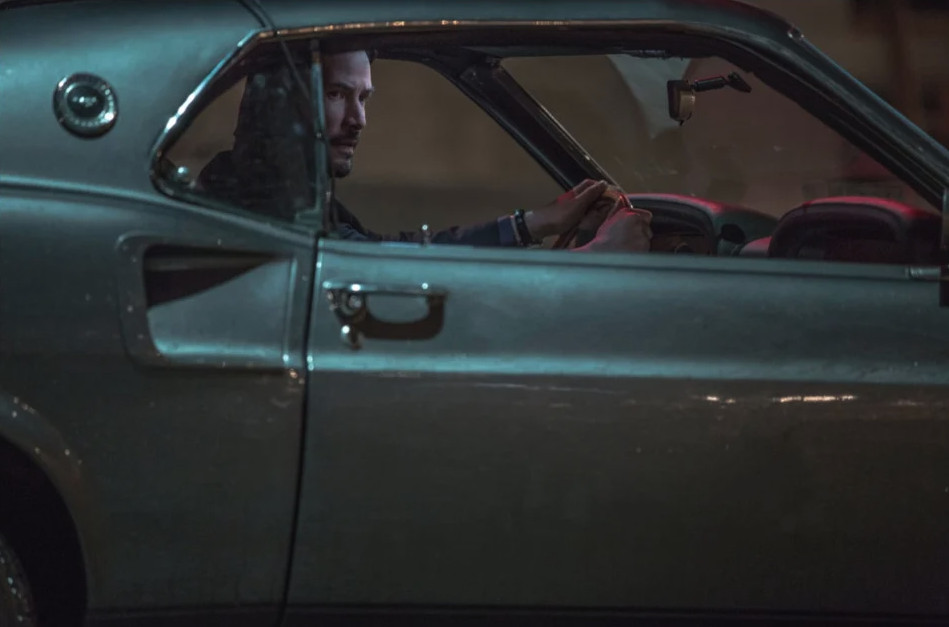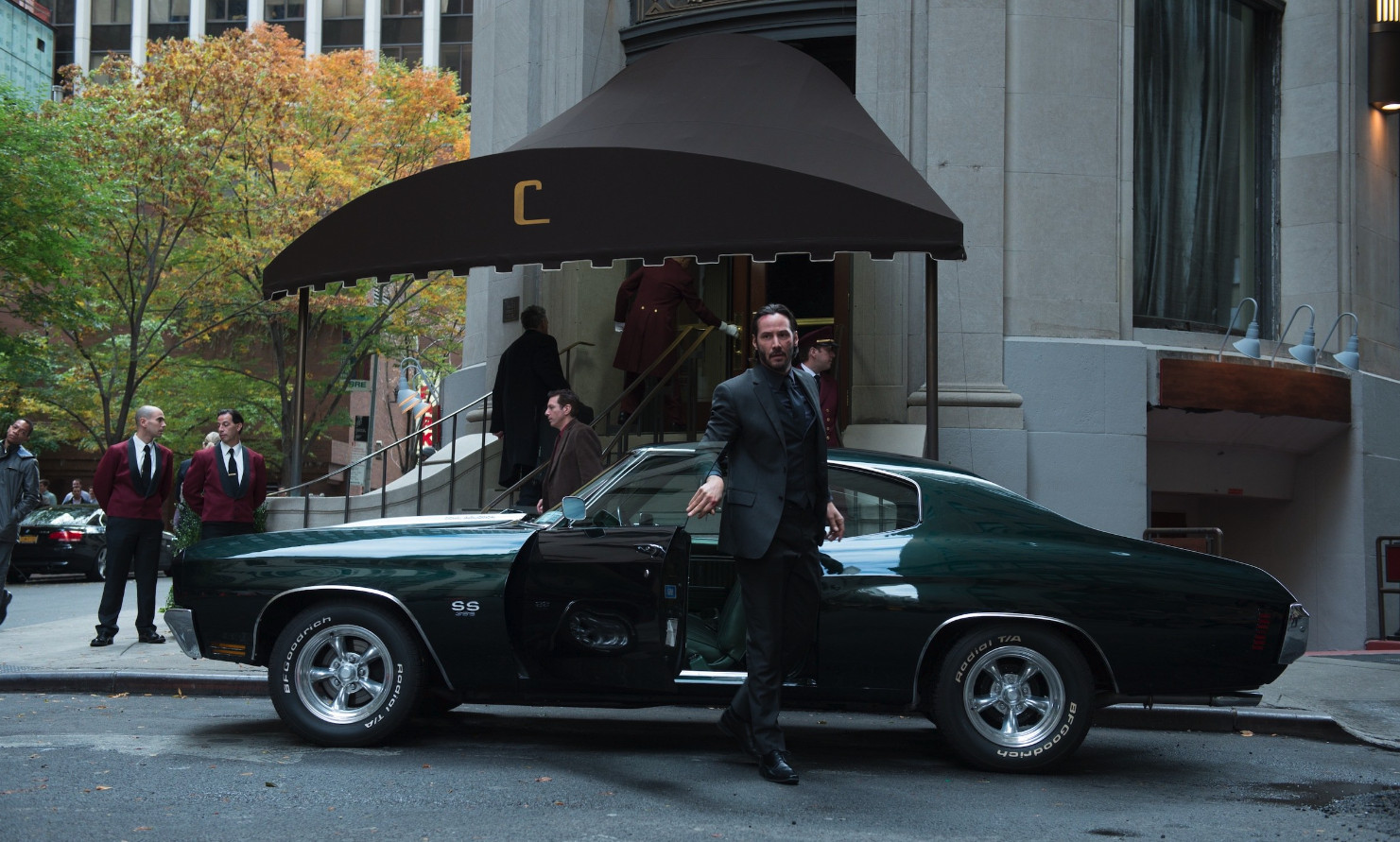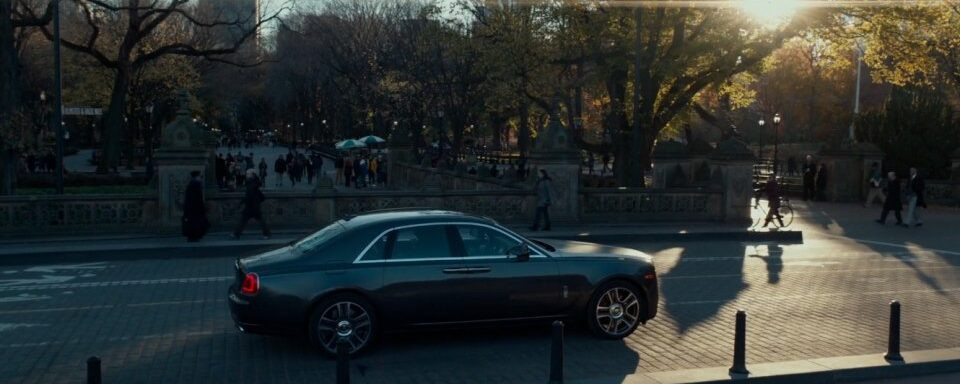John Wick has cemented itself as a modern action movie phenomenon. Unlike many franchises today, it didn’t emerge from pre-existing books or comics. The original 2014 film introduced us to Keanu Reeves as John Wick, a retired and legendary hitman. Grieving the recent loss of his wife, Wick’s peace is brutally shattered when the arrogant son of a Russian mobster not only kills his Beagle puppy—a final gift from his late wife—but also steals his prized car.
While the plot is simple revenge at its core, the film captivated audiences with its stunning action choreography, over-the-top sequences, and Reeves’ intense portrayal of tactical prowess and stoic demeanor. He is known as “Baba Yaga,” the Boogeyman of Russian folklore, and for good reason.
With John Wick: Chapter 4 achieving box office success, it’s the perfect time to delve into one of the series’ most appealing aspects: John Wick’s exceptional taste in American cars. Let’s explore the impressive vehicles that have graced the John Wick saga.
1969 Ford Mustang Boss 429: The Car That Started It All
 John Wick driving his 1969 Ford Mustang Boss 429 in an action scene from the first movie
John Wick driving his 1969 Ford Mustang Boss 429 in an action scene from the first movie
The catalyst for the entire 2014 John Wick movie is a chance encounter at a gas station. Here, Iosef Tarasov, played by Alfie Allen, the entitled son of a Russian mob boss, fixates on Wick’s car—ostensibly a 1969 Mustang Boss 429. While car aficionados might spot discrepancies like bodywork details, missing badging, and an automatic transmission, it effectively embodies the iconic muscle car for the film’s action-packed narrative. Tarasov’s arrogant attempt to bully Wick into selling the car is firmly rejected.
Fueled by entitlement, Tarasov and his crew escalate things by invading Wick’s home, committing the unspeakable act of killing his dog, and stealing the Boss 429. They soon discover they have awakened a force they cannot comprehend.
 Close-up of John Wick's classic 1969 Ford Mustang Boss 429, a symbol of his past
Close-up of John Wick's classic 1969 Ford Mustang Boss 429, a symbol of his past
In reality, a genuine 1969 Boss 429 is exceptionally rare, with only 857 units produced in its first year to homologate Ford’s massive 7.0-liter NASCAR engine. These Mustangs represented the pinnacle of non-Shelby performance, boasting a factory-underrated 375 horsepower and 450 lb-ft of torque. The Boss 429 in John Wick isn’t just a car; it’s a symbol of Wick’s former life and the injustice that ignites his quest for vengeance.
1970 Chevrolet Chevelle SS 396: The Replacement Ride
 John Wick's 1970 Chevrolet Chevelle SS 396, a powerful muscle car used for his revenge
John Wick's 1970 Chevrolet Chevelle SS 396, a powerful muscle car used for his revenge
During a visit to a performance shop owned by a friend, Wick surveys a collection of impressive vehicles, including a Porsche 993 GT2 and a Ford GT40 in Gulf livery. It is here that Wick acquires his temporary replacement vehicle: a 1970 Chevelle SS 396.
The Chevelle doesn’t enjoy extensive screen time in the original film, as Wick ultimately chooses a modern Dodge Charger for his final confrontation with the Russian mob. However, the sinister presence of the dark green Chevelle—a custom shade darker than factory Forest Green—cruising through Manhattan leaves a lasting impression.
True to the franchise’s nature, no car is safe for long. The SS 396 is repurposed as a battering ram in the opening scene of Chapter 2, used by Wick to reclaim his (again, doomed) Mustang.
 Front view of the menacing green 1970 Chevelle SS 396 in John Wick: Chapter 2
Front view of the menacing green 1970 Chevelle SS 396 in John Wick: Chapter 2
Rolls-Royce Ghost (Series II): A Moment of Sophistication
 John Wick with a Rolls-Royce Ghost Series II, representing a moment of sophistication amidst chaos
John Wick with a Rolls-Royce Ghost Series II, representing a moment of sophistication amidst chaos
After the destruction of classic muscle cars, John takes a brief hiatus from vintage metal. For much of Chapter 2, he is seen navigating on foot, utilizing public transportation, and, in the film’s closing moments, stepping out from the rear door of a Series II Rolls-Royce Ghost. While the Ghost might be too contemporary to be considered a classic collectible, it arguably stands as the most fitting vehicle for the Baba Yaga—at least one that complements his tailored suits. It signifies a temporary elevation in Wick’s transportation, a touch of luxury amidst the chaos.
Range Rover (LP): The Practical Choice in Parabellum
 John Wick and Sofia escaping in a 1995 Range Rover in a desert scene from John Wick: Chapter 3
John Wick and Sofia escaping in a 1995 Range Rover in a desert scene from John Wick: Chapter 3
From a car enthusiast’s perspective, John Wick: Chapter 3—Parabellum might be considered the weakest in the quadrilogy regarding standout vehicles. However, it still has its automotive merits. The film introduces Halle Berry and her impressive Belgian Malinois attack dogs, partially compensating for a perceived lack of roaring V-8s.
Around the midpoint of the movie, Wick, Berry’s character Sofia, and her canine companions make their escape into the desert in a second-generation Range Rover. According to the Internet Movie Car Database, this is identified as a 1995 model. While these British SUVs are becoming collectible, particularly in pristine condition (valued between $54,000–$68,000 for top examples), the movie’s Rangie appears to be a more seasoned, driver-quality vehicle, perfectly suited for the rugged terrain and escape scenario.
1971 Plymouth Cuda: Muscle Car Mayhem Returns
 Action shot of the 1971 Plymouth Cuda driven by John Wick in a thrilling scene from Chapter 4
Action shot of the 1971 Plymouth Cuda driven by John Wick in a thrilling scene from Chapter 4
Baba Yaga makes a triumphant return to form in Chapter 4, taking the wheel of a menacing 1971 Plymouth Cuda. Predictably, John Wick subjects the poor Cuda to considerable punishment. The pivotal Cuda scene unfolds at night, obscuring the specifics of the engine under the hood. However, given Wick’s access to illicit gold coins, his established taste in cars, and the magic of movie props, speculation leans towards a potent 440 Six Pack or even the legendary Hemi engine.
The continued success of the John Wick franchise suggests that a fifth installment could be another hit. Perhaps Wick will add an AMX to his collection of cinematic muscle cars, completing a “muscle car bingo” of sorts (GM, Ford, Mopar, AMC). Across four films, the Boogeyman has built an on-screen car resume that rivals some of the greatest silver screen icons. John Wick’s c.a.r.s are not just vehicles; they are extensions of his character, reflecting his style, his past, and his relentless drive.
